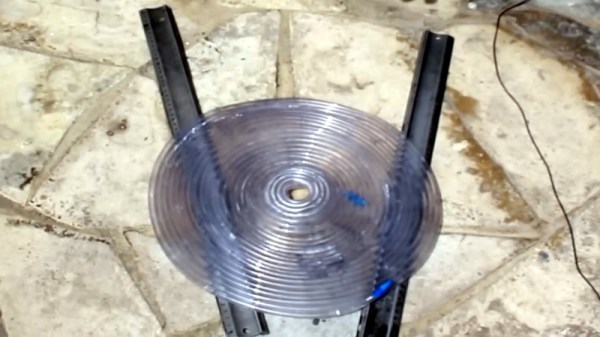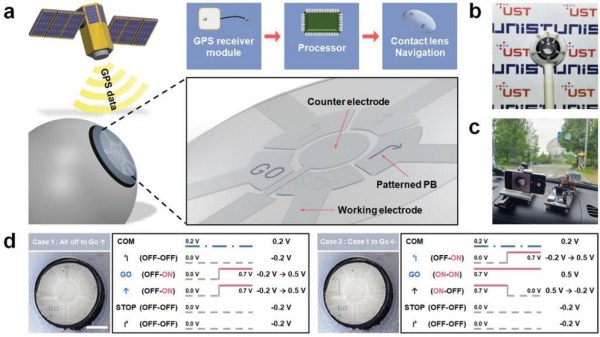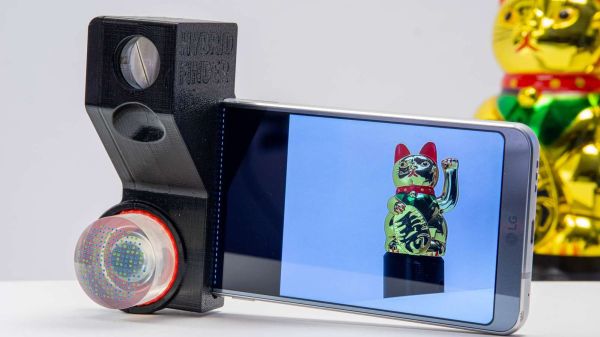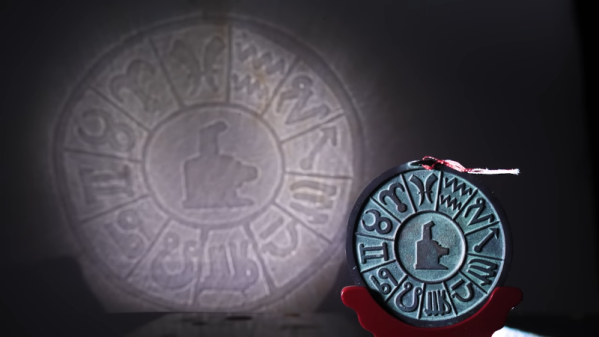A report released this week suggests that 50 flights into its five-flight schedule, the Mars helicopter might be starting to show its age. The report details a protracted communications outage Ingenuity’s flight controllers struggled with for six sols after flight 49 back in April. At first attributed to a “communications shadow” caused by the helicopter’s robotic buddy, Perseverance, moving behind a rocky outcrop and denying line of sight, things got a little dicey once the rover repositioned and there was still no joy. Since the helicopter has now graduated from “technology demonstration” to a full-fledged member of the team tasked with scouting locations for the rover while respecting the no-fly zone around it, it was essential to get it flying again. Several attempts to upload a flight plan failed with nothing but an acknowledgment signal from the helicopter, but a final attempt got the program uploaded and flight 50 was a complete if belated success. So that’s good, but the worrying news is that since Sol 685, the helicopter has been switching in and out of nighttime survival mode. What that portends is unclear, but no matter how amazing the engineering is, there’s only so much that can be asked on Ingenuity before something finally gives.
optics83 Articles
A Fresnel Lens Without The Pain
Making a traditional glass lens requires a lot of experience, skill, and patience grinding a piece of glass to the required shape, and is not for the casual experimenter. Making a glass Fresnel lens with its concentric rings requires even more work, but as the ever-resourceful [Robert Murray-Smith] shows us, a Fresnel lens can be made from far more mundane materials. He shows us a working lens made from transparent plastic tube, and even successfully smoulders a piece of paper with it under the anaemic British sun.
His lens, with its circular profile tube filled with water, is not perhaps the most efficient lens in terms of light focused per unit area of lens. From dredging up our highschool physics lessons we are guessing that half the light is diffracted outwards rather than inwards by the cylindrical profile of the coil, but for the cost of the whole device we’re not sure that matters. Next time we’re shipwrecked on a desolate island with a handy supply of clear plastic tube and fresh water, we know we can always raise a fire.
If Fresnel lenses interest you, we’ve taken a look in the past at their history.
Smart Contact Lenses Tell You Where To Go
Augmented Reality (AR) promises to relieve us from from the boredom of mundane reality and can also help you navigate unfamiliar environments. Current AR tech leaves something to be desired, but researchers at the Korea Electrotechnology Research Institute have brought AR contact lenses closer to actual reality.
The researchers micro-printed FeFe(CN)6 ink onto the contact substrate and thermally reduced it at 120˚C for nine seconds to form Prussian Blue, an electrochromic pigment. By confining the material with the meniscus of the ink, resolution was better than previous techniques to display data on contact lenses. While the ability to reversibly change from clear to blue faded after 200 cycles, the researchers were targeting a disposable type of smart contact lens, so degradation of the display wasn’t considered a deal breaker.
Since voltages applied were constant, it seems this isn’t a true bi-stable display like e-ink where power is only required to change states. The on condition of a section required 0.5 V while off was -0.2 V. The researchers printed a contact with straight, left, and right arrows as well as STOP and GO commands. Connected to a GPS-equipped Arduino Uno, they used it to navigate between ten different checkpoints as a demonstration. Only a 3D printed eyeball was brave enough (or had IRB approval) to wear the contact lens, so watching the state change through a macro lens attached to a smartphone camera had to do.
With more AR devices on the way, maybe it’s time to start embedding household objects with invisible QR codes or cleaning your workshop to get ready for your AR workbench.
What’s Inside A Super-Cheap Projector? Not A Lot!
[Raymond Ma] has a penchant for browsing Aliexpress and purchasing curious pieces of hardware that are as high on promises as they are low on cost. This is a process he aptly sums up with his opening line of “I should have known better, but…” Luckily, these devices all get torn down and analyzed so we can each enjoy and share a little slice of disappointment.
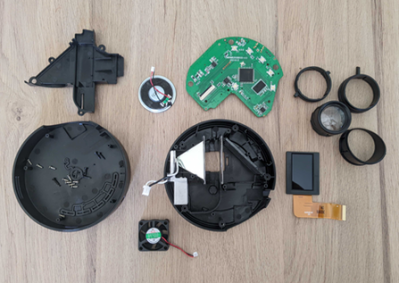 One such item is the $30 USD YT200 mini projector, which at 320×180 is almost as low on pixels as it is on cost. Still, [Raymond] looks inside to find out if there is perhaps more hacking potential than there is image resolution.
One such item is the $30 USD YT200 mini projector, which at 320×180 is almost as low on pixels as it is on cost. Still, [Raymond] looks inside to find out if there is perhaps more hacking potential than there is image resolution.
The YT200 lacks any kind of normal video input, and the anemic 15 lumen output is brazenly branded as a feature to protect children’s eyes from excessive brightness.
Light from the single LED is collimated with some Fresnel lenses. That light passes through an LCD panel, and from there the image bounces off a mirror and through a focusing lens housed in a spiral guide. Focal adjustments are made with a small lever, and the whole assembly provides just enough friction to prevent the lens from moving out of focus on its own.
The device actually does work fairly well for what it is: a way to play a range of different media types off a connected USB storage device. As long as one is in a dark room, anyway.
[Raymond] hopes to find some alternate use for the device. Might we suggest projecting into a frosted glass globe to create a sort of spherical display? A spooky eye animation on a USB stick might pair well with that.
Interesting Optical Journey Results In Hybrid Viewfinder For Smartphones
Fair warning: if you ever thought there was nothing particularly interesting with optical viewfinders, prepare to have your misconception corrected by [volzo] with this deep-dive into camera-aiming aids that leads to an interesting hybrid smartphone viewfinder.
For most of us, the traditional optical viewfinder is very much a thing of the past, having been supplanted by digital cameras and LCD displays. But some people still want to frame a photograph the old-fashioned way, and the optical principles that make that possible are actually a lot more complicated than they seem. [volzo]’s blog post and video go into a great deal of detail on viewfinder optics, so feel free to fall down that rabbit hole — it’s worth the trip. But if you’d rather cut to the chase, the actual viewfinder build starts at about the 23:00 mark in the video.
The design is an interesting combination of lenses and beamsplitters that live in a 3D-printed enclosure. The whole thing slips over one end of a smartphone and combines an optical view of the scene that corresponds to the camera’s field of view with a small digital overlay from the phone’s screen. The overlay is quite simple: just some framing gridlines and a tilt indicator that’s generated by a little Android app. But it’s clear that much more information could be added now that [volzo] has all the optical issues sorted out.
We appreciate this deep dive into something that appears to be mundane and outdated, which actually proves to be non-obvious and pretty interesting. And if you have any doubt about the extreme cleverness of the camera engineers of yore, look no further than this sort-of solar-powered camera from the 1960s.
Continue reading “Interesting Optical Journey Results In Hybrid Viewfinder For Smartphones”
Magic Mirror Isn’t Transparent Metal
One of the Star Trek movies has a McGuffin called “transparent aluminum.” While magic mirrors aren’t really transparent, it appears that way to a casual observer. If you haven’t seen one of these, they are polished metal mirrors with a pattern embossed on the back. When you shine a point source of light on the mirror, however, the reflection matches what is on the back of the mirror. Is it transparent? No, and the video by [Steve Mould] below explains what’s really going on.
The reality is that very subtle variations of the surface produce the image. You need some understanding of optics and calculus to fully understand what’s going on.
A Tiny Forest Of Resistors Makes For Quick And Dirty Adaptive Optics
The term “adaptive optics” sounds like something that should be really complicated and really expensive. And in general, the ability to control the properties of optical elements is sufficiently difficult enough that it’s reserved for big-science stuff like billion-dollar space telescopes.
But that doesn’t mean there aren’t quick and dirty adaptive optics that are suitable for the budget-minded experimenter, like this thermally deformable mirror. As [Zachary Tong] explains, this project, which started quite some time ago, is dead simple — a 4 by 4 array of through-hole resistors stand on end, and these are attached to a glass coverslip that has been aluminized on one side. An Arduino and a couple of shift registers make it possible to individually address each of the 16 resistors in the array. Passing a current through a resistor heats it up a bit, leading to thermal expansion and a slight deflection of the mirror sitting on top of the array. Controlling which resistors heat up and by how much should lead to deformation of the mirror surface in a predictable way.
The video below shows some of [Zach]’s experiments with the setup. Unfortunately, he wasn’t able to fully demonstrate its potential — the low-quality mirror didn’t cooperate with his homebrew interferometer. He was, however, able to use a dial indicator to show deflection of the mirror in the 2- to 3-micron range by heating the array. That alone is pretty cool, especially given the dirt cheap nature of the build.
As for practical uses, don’t get too excited. As [Zach] points out, thermal systems like this will probably never be as fast as MEMS or piezoelectric actuators, and many use cases for adaptive optics really don’t react well to added heat. But changing the shape of a mirror with air pressure is another thing.
Continue reading “A Tiny Forest Of Resistors Makes For Quick And Dirty Adaptive Optics”


